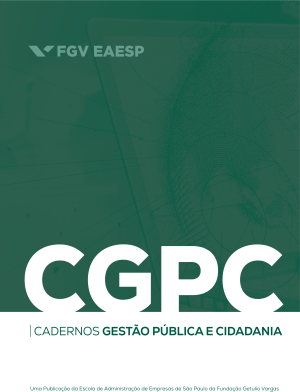Institutionalization and social participation in the urban design master plan of an Amazonian capital
Main Article Content
Abstract
The urban design master plan for cities was regulated to guarantee and increase participation mechanisms, achieving legitimacy and joint responsibility, and although the legislation establishes a mandatory master plan for cities with more than 20,000 inhabitants, its application is not a reality in some regions. The main objective of this article was to analyze the institutionalization of the master plan revision for the municipality of Porto Velho, carrying out qualitative research that uses descriptive procedures through a case study. In secondary data, content analysis by Bardin (2011) is used, through the process of Cidade (2004), composed of three stages, which correspond to the institutionalization flow. The results found show that mandatory popular participation, to ensure transparency in the institutionalization process of the master plan to break with the traditional and interventionist model, can also be used, however, as an eminently political instrument, being thus met with great resistance, disbelief, and lack of participation, which are justified by its effective implementation. Thus, it seeks to contribute to a broader understanding of the master plan and the generation of information to assist public managers in the urban management of Amazonian cities.
Downloads
Article Details

This work is licensed under a Creative Commons Attribution 4.0 International License.
Authors publishing in this journal agree to the following terms:
The authors have the copyright and grant the journal the right of first publication. The authors’ work is also licensed under the Creative Commons Attribution License (CC BY 4.0), allowing sharing its content since acknowledging authorship and first publication in this journal.
Authors are authorized to take on additional contracts separately for the non-exclusive distribution of the version of the work published in this journal since acknowledging authorship and first publication. For example, the authors may publish the content in institutional repositories or as a book chapter).
Authors are encouraged to distribute the publication online (e.g., in institutional repositories or on their personal webpage, among others), as this can lead to improvements and increase impact and citation of the published work. For more information, please check The effect of open access.
Cadernos Gestão Pública e Cidadania (CGPC) (Public Management and Citizenship Journal) is a journal committed to contributing to the protection of the author's rights. In this sense:
- Moral rights and rights of use of the article are secured to the author;
- It adopts the Creative Commons BY (CC-BY) license in all texts published;
- It uses similarity-detection software (iThenticate);
- The journal undertakes measures to fight plagiarism and ethical misconduct, in line with the guidelines of the Committee on Publication Ethics (COPE).
For more information, please see CGPC Ethics & Conduct.
References
Bardin, L. (2011). Análise de conteúdo. São Paulo: Edições 70.
Borges, L.R.M. (2016). Centenário de Ações Desenvolvimentistas, Grandes Projetos de Infraestrutura e a Reconfiguração do Território em Porto Velho-RO. In. Porto Velho, urbanização e desafios para uma cidade centenária. COSTA SILVA, R. G. (org.). Porto Velho: Temática Editora, Edufro.
Chambers, S. (2020). Deliberative Democratic Theory. Annual Review of Political Science, 6, pp. 307-326, 2003. Recuperado de https://www.annualreviews.org/doi/abs/10.1146/annurev.polisci.6.121901.085538
Chávez, H. (2015). Información y ciudadanía, una propuesta desde la gobernanza. Investigación. Library Research, 29(67), 113-140. doi: 10.1016/j.ibbai.2016.02.039 DOI: https://doi.org/10.1016/j.ibbai.2016.02.039
Cidades, Ministério das Cidades (2004). Plano diretor participativo: Guia para elaboração pelos municípios e cidadãos. Confea.
Elster, J. (1993). Privatisation in Eastern Europe: An introduction. History of European Ideas, 17(6),713–714. DOI: https://doi.org/10.1016/0191-6599(93)90093-6
Eisenhardt, K. M. (1989). Building theories from case study research. Academy of Management Review, 14(4), 532-550. doi: 10.1016/0191-6599(93)90093-6 DOI: https://doi.org/10.5465/amr.1989.4308385
Estatuto da Cidade (2002): Guia para implementação pelos municípios e cidades. 2. ed. Brasília: Câmara dos Deputados, coordenação de publicações. (Lei nº 10.257 de 10 de julho de 2001 que estabelece diretrizes gerais da política urbana).
Frey, K. (2004). Governança interativa: Uma concepção para compreender a gestão pública participativa? Política & Sociedade, 5, 119-138. doi: 10.5007/%25x
Fung, A. (2006). Varieties of Participation in Complex Governance. Public Administration Review, 66, 66-75. doi: 10.1111/j.1540-6210.2006.00667.x DOI: https://doi.org/10.1111/j.1540-6210.2006.00667.x
Grevetti, R. (2019). O plano diretor como instrumento de política urbana. Revista Jus Navigandi, 24(5759). Recuperado de https://jus.com.br/artigos/72199
Habermas, J. (1993). The theory of communicative action. Vol 2. Lifeworld and system: A critique of functionalist reason. Beacon Press.
Habermas, J. (1994). Three Normative Models of Democracy. Constellations. DOI: https://doi.org/10.1111/j.1467-8675.1994.tb00001.x
Instituto Brasileiro de Geografia e Estatística - IBGE. (2017). Estimativas populacionais para os municípios e para as Unidades da Federação brasileiros em 01.07.2017. Recuperado de
Kooiman, J. (2002). Governance. A social-political perspective: Participatory governance. Political and scietal implications (pp. 71-96). Opladen: Leske Budrich DOI: https://doi.org/10.1007/978-3-663-11003-3_4
Low-Beer, J. (2002). Os serviços públicos urbanos e a regulação: novo enfoque em políticas públicas. PosFAUUSP, 12, 34-49. doi: 10.11606/issn.2317-2762.v12i0p34-49 DOI: https://doi.org/10.11606/issn.2317-2762.v12i0p34-49
Merriam, S. B. (2002). Introduction to qualitative research. Qualitative research in practice: examples for discussion and analysis (pp. 3-17). EUA: Jossey-Bass
Moraes, R. & Andrade, E. S. J. (2017). Gestão do planejamento ambiental urbano: Amazônia plano diretor municipal e gestão do território. IBAM.
Nantes, R. A. (2018). Plano Diretor de Cidades-Gêmeas: Proposta institucional de matriz de análise para municípios amazônicos. (Dissertação de Mestrado. Universidade Federal de Rondônia)
Oliveira, J. A., Schor, T. (2010). Urbanização na Amazônia: O local e o global. IN: Val, A. L., Santos, G.M. Grupo de Estudos Estratégicos Amazônicos - Caderno de Debates TOMA III.Manaus, AM: INPA
Porto Velho, (2020). Prefeitura Municipal. A cidade. Recuperado de https://www.portovelho.ro.gov.br/artigo/17800/a-cidade#
Speer, J. (2012). Participatory governance reform: A good strategy for increasing government responsiveness and improving public services? World Development, 40(12), 2379-2398. doi: 10.1016/j.worlddev.2012.05.034 DOI: https://doi.org/10.1016/j.worlddev.2012.05.034
Tamboril, F. A. B., Barboza, J. J. (2016) Porto Velho segregada e irregular: assim surge uma cidade. In. Porto Velho, urbanização e desafios para uma cidade centenária. COSTA SILVA, R. G. (org.). Porto Velho: Temática Editora, Edufro.
Vieira, M.G., Silva, C.C (2011). Plano Diretor como Instrumento de Planejamento Participativo: Um estudo na Cidade de Caruaru/PE. Gestão e Sociedade, 5(11), 176-191. doi: 10.21171/ges.v5i11.1328 DOI: https://doi.org/10.21171/ges.v5i11.1328







